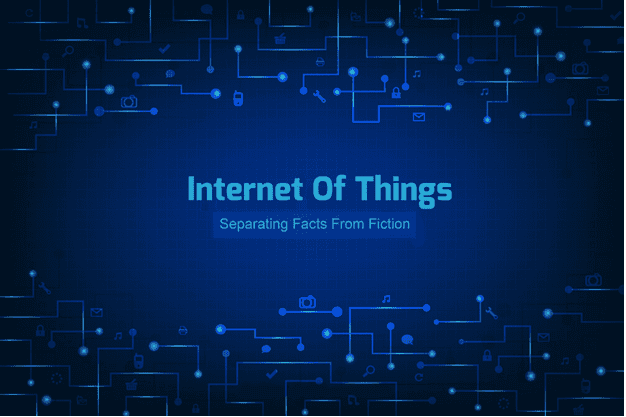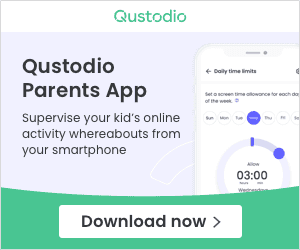IoT is an acronym for the Internet of Things. There are many overly technical or vague definitions for the term. Still, at its core, it is basically about leveraging the power of the internet to transform “things” and allow them to gather and send information without human interference. IoT steers the power of the internet away from just smartphones and computers.
The concept, when fully adopted, will allow technology to further make life more productive, safer and more comfortable for both individuals and businesses. This is because IoT provides more insight and control over everyday objects and domains that could not get connected to the internet before now.
As is the case with most disruptive concepts and technologies, there is a lot of misinformation around the topic of IoT. In this article, we will separate facts from fiction and help you to understand better how IoT can improve your everyday personal or business processes.
The Myths Clouding IoT
As the Internet of Things becomes commonplace, myths borne out of misconceptions and irrational enthusiasm and fears (in equal measure) have been on the rise.
It is not a fallacious imagination that a time is coming in the near future when separating what is true and what is made up about IoT will become a tasking undertaking. But before this gloomy outlook becomes reality, here’s a list of some myths that are already making rounds online.
IoT is about consumer devices only
Many people immediately think about sleep trackers, smart light bulbs and refrigerators that can restock themselves without human intervention when IoT is the topic of discussion. Although these are valid examples in the overall definition of IoT, the concept goes far beyond consumer devices.
In fact, businesses are the biggest adopters of IoT. Two good examples of this are Caterpillar’s overall use of IoT and Rio Tinto’s use of IoT to manage its autonomous trucks.
Caterpillar uses IoT to notify their drivers about parts that need changing and also send basic instructions on how to effect changes via augmented reality.
The IoT-driven analytics generated allows the company to remain proactive across its land and sea operations, saving a lot of money in the process.
Rio Tinto’s autonomous trucks work in places where repairs after a breakdown are unrealistic. The company uses IoT sensors to keep tabs on the health of its trucks and nip problems in the bud before they translate to complete failure. This saves the company millions of dollars monthly in repair costs and downtimes avoided.
IoT is a Constant Security Risk
As is the case with all things connected to the internet, there is a security risk with IoT. However, companies that design IoT systems are continually testing new security standards and frameworks to improve the overall security of connected devices.
Governments are also chipping in to ensure that manufacturers are sticking to best practices in the design of IoT systems.
It is also important to note that some of the reactions that greet headlines related to IoT security (such as this and this) are usually overblown. They often ignore the fact that security in the online world is the collective responsibility of all the stakeholders involved, including the end-users.
The IoT Market is Binary
The usual one-size-fits-all approach in consumer manufacturing does not apply in IoT. The major IoT users often need bespoke solutions that solve a need.
Manufacturers, therefore, have to focus on one sub-market in many cases. The end users can also be safe in the knowledge that IoT allows targeted and practical solutions.
IoT Connects the Whole World
IoT devices can barely communicate between themselves now, so how will they connect the world? The ideal example of IoT is one where your smart-lights can communicate with your security system, which in turn talks to your gate while you can control everything on your smartphone.
Unfortunately, even with the recent strides in the industry, this still sounds like something you can only see in a sci-fi movie. The IoT world is still in the early stages of navigating the waters of scalability, bandwidth and interoperability.
IoT is all about the connected devices
The connected systems are only a part of the IoT structure. The data created by the connected “things” are the core of all IoT processes. Brands that understand how to interpret the data and apply the results to their business processes will stand out over the coming years.
IoT devices must be wirelessly connected
Generally, IoT devices have to be connected, but it is now possible to create wired IoT systems that are linked to the host through a range of technologies like USB and Ethernet.
Facts about IoT Today
It is not New
In 1982, students at Carnegie Mellon University in Pittsburgh, Pennsylvania rigged the Coke machine on campus to report the availability of cold drinks to a computer in a nearby office.
This is the first official use of IoT technology. However, ATMs that report cash levels to the bank have been around since 1974.
Companies are struggling to find IoT-related talent
The best IoT talents have a unique combination of software programming skills, data science capabilities and understanding of computer hardware. More than two-thirds of companies investing in IoT are not able to fill vacant positions for talents they need.
A Cisco report says around 80% of companies deploying IoT are worried that they do not have the right personnel to use the data generated correctly.
IoT beat people in connection to the internet over the last decade
Although IoT still feels like a strange concept to many, it has, for some time, been bigger than the web in general. According to Cisco, devices connected to the internet more than people in 2008. Now, more than 10 billion devices are connected to the internet.
Consumers do not have the largest share of the IoT market
Data from GrowthEnabler show that smart cities, industry and health care dominate the IoT market with 26%, 24% and 20% market shares respectively. This will come as a surprise to many that believe IoT is about, wearables, smart home appliances and other consumer-facing applications.
IoT devices that don’t need power are coming
One downside to IoT usage is that the devices often need electricity or battery replacements to continue generating data.
This will soon be a thing of the past as scientists are working on sensors that will not require wired electrical connection or batteries to function. The new sensors will be powered by sunlight, heat, vibrations or radio frequencies.
IoT predictions to watch in 2020
Analysts expect more than 21 billion devices to be connected to the internet by 2020
In 2015, there were 4.9 million IoT connected devices. However, by the end of 2016, the number grew to around 3.9 billion. This growth rate is expected to continue into 2020 with more than 21 billion devices connected by the end of the year.
The projected figures mean that by 2020, IoT will no longer be ignored by businesses, especially.
More Smart Cities will be developed
The use of IoT in the development and running of cities is expected to gain more traction in 2020. Cities will be smarter as the data gleaned from IoT usage can be used to improve the overall quality of life.
Residents will be able to save money, time and resources. IoT usage will also make it easier to keep a profile of residents and improve the management of crime.
Companies will have to invest in data processing solutions
The continued growth of IoT will further increase the volume of data churned out daily. The generated data will need to be processed and analyzed, forcing companies to invest in faster and cheaper solutions.
There will be an influx of investments
As more people, businesses and governments across the world wake up to the benefits of IoT, there will be an influx of capital into the industry. Analysts predict that by the end of 2020, IoT spending would have reached the $6 trillion mark.
Prospects of IoT – how promising is the future of IoZT?
The future of IoT is bright. We will see more individuals and businesses tapping into billions of connected devices to generate insights on everyday operations. It will become outlandish to run a business without access to real-time data from every facet of the organizational structure.
IoT will become as widespread as smartphones, but they will be far more invisible. The generated data and insights will run smoothly in the background without guzzling resources or requiring any human intervention.
A notification-based approach for IoT will become popular, eliminating the need for manual checks on literally anything. Instead of manually checking processes, the right people will be alerted at predetermined intervals.
Notifications and alerts can include valuable insights. Think about your car notifying you a week ahead of time that you need to replace your battery (and perhaps order it right away). What about a mechanical business system that can self-diagnose and recommend a course of action to prevent downtimes? Think about the staff-hours that can be saved!
IT professionals with the right combination of skills to work in the IoT niche will see a massive rise in demand for their services. The Cisco report that shows how 8 in 10 companies are worried about finding experts that can interpret data is only half of the equation.
Hardware and software design companies will need a wide range of professionals to cover talent gaps as they race towards meeting the unique demands of various IoT user groups.
The future of IoT is one that will help us to get closer to reaching our full potential as humans. We will be able to spend more time on the things that matter.
However, as we eliminate redundant jobs and save costs, it is important to reinvest in the support and training of the people most affected by these job losses. This will encourage more widespread IoT systems usage and avoid negative disruptions to the world economy.
Author Bio
Rithesh is co-founder of Aviv Digital, a digital marketing research and training centre in India







